Fort Huachuca Sentinel Landscape
-
Arizona
-
Established 2015
About
Located in southeastern Arizona, Fort Huachuca is the home of the U.S Army Intelligence Center of Excellence and the Network Enterprise Technology Command. As a Major Range Test Facility Base, Fort Huachuca is a hub of electromagnetic technology testing and training. The base is also one of the most extensive unmanned aerial vehicle training facilities globally, supporting operations for the U.S. Army, U.S. Air Force, U.S. Marine Corps, and U.S. Customs and Border Protection. The arid, remote landscape surrounding the post is predominantly made up of broad grassland valleys defined by high elevation forested mountain ranges, predominately used for livestock grazing. Land uses that protect open space, such as ranching, supports Fort Huachuca by ensuring low levels of electromagnetic interference on the installation’s training activities. However, development pressure is increasing in the region due to urban sprawl and population growth. Land use conversion and changing climactic conditions pose challenges to local communities by increasing competition for limited water resources, fragmenting important wildlife habitat, and encroaching upon Fort Huachuca’s critical airspace and electronic range. As a result, a group of partners came together to form the Fort Huachuca Sentinel Landscape in 2015. The primary goal of this landscape is to build resilience through collaborative, community-driven strategies, in order to tackle issues such as water conservation, agricultural viability, wildlife habitat restoration, and military mission protection.
Interactive Landscape Map
Total Funding by Partner
| Partner | FY2014 | FY2015 | FY2016 | FY2017 | FY2018 | FY2019 | FY2020 | FY2021 | FY2022 |
|---|---|---|---|---|---|---|---|---|---|
| USDA | $0.51M | $1.13M | $0.58M | $0.99M | $3.13M | $2.28M | $1.13M | $3.02M | $0.65M |
| DoD | $5.00M | $0.00M | $2.66M | $0.63M | $4.11M | $1.07M | $2.22M | $1.63M | $5.70M |
| DOI | $0.06M | $0.08M | $0.21M | $0.03M | $0.07M | $1.64M | $0.05M | $0.0M | $0.02M |
| State | $0.45M | $1.21M | $1.57M | $0.58M | $1.01M | $0.73M | $0.22M | $0.11M | $0.29M |
| Local | $2.70M | $0.00M | $0.00M | $0.00M | $0.00M | $0.58M | $0.45M | $0.28M | $0.39M |
| Private | $0.00M | $1.06M | $0.12M | $0.11M | $0.82M | $0.09M | $4.12M | $2.49M | $0.0M |
Total Acres Protected and Enrolled
| Acres Protected (Since Designation) | 73206.00 |
|---|---|
| Acres Enrolled (During FY22) | 107101.00 |
Partnership Highlights
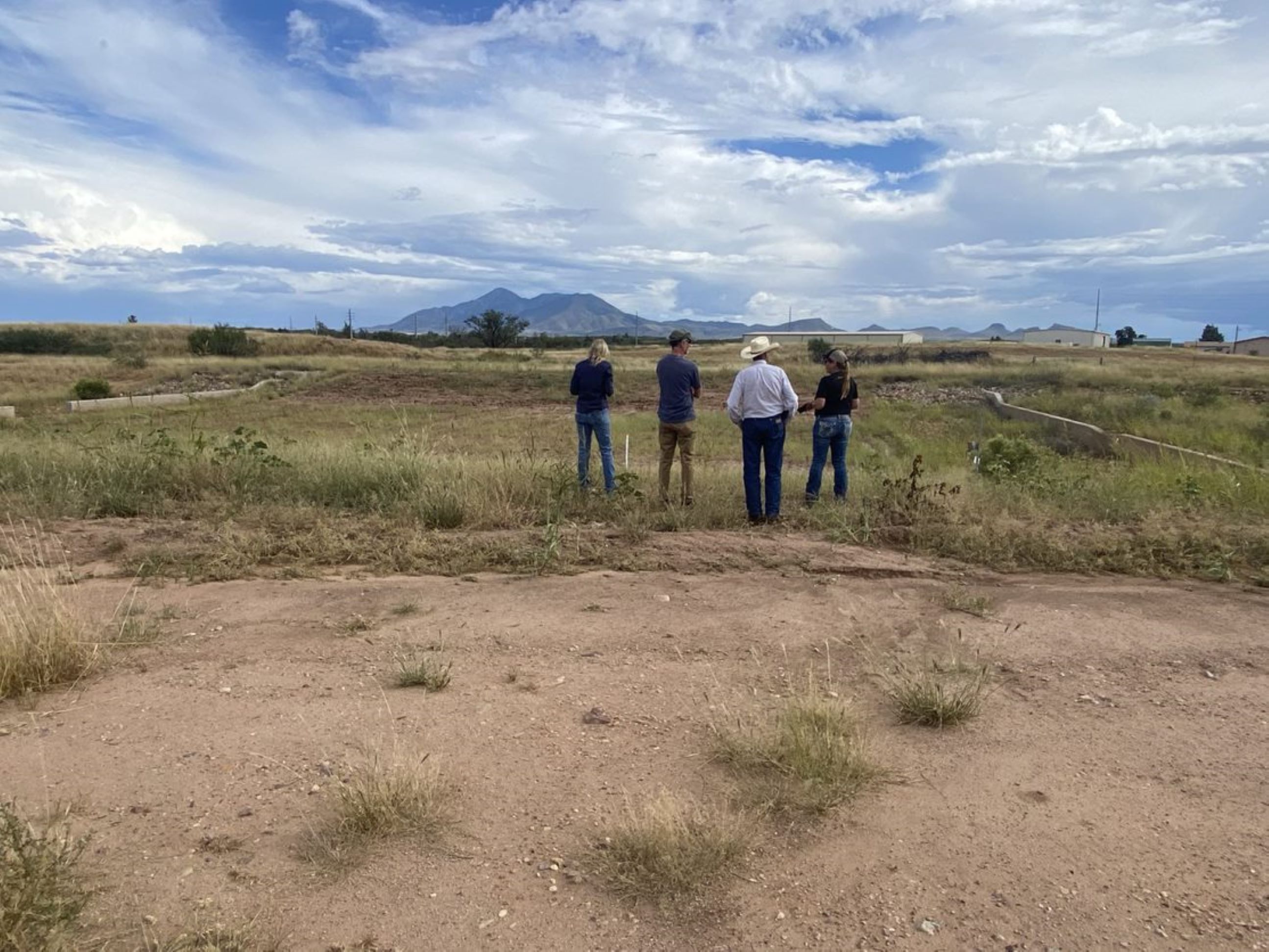
Agencies Affirm Their Commitment to Address Water and Ecological Conservation Near The San Pedro River
The Bureau of Land Management’s (BLM) Gila District, U.S. Army Garrison Fort Huachuca, Cochise County, and City of Sierra Vista affirmed their commitment to water and ecological conservation of the San Pedro River and Sierra Vista subwatershed area by signing a Memorandum of Understanding (MOU) for cooperative monitoring and management of the San Pedro Riparian National Conservation Area (SPRNCA) and surrounding areas within Cochise County. The MOU provides a proposed path to ensure the achievement of mutually shared goals of an ecologically viable SPRNCA and regional water security, including: a healthy San Pedro River and ecologically viable SPRNCA, adequate long-term water supplies to maintain the needs of the area’s residents and property owners, as well as the SPRNCA, more opportunities for continued economic growth and development within Cochise County, an operationally secure Fort Huachuca that can accomplish its national defense missions, have a safe and adequate water supply and comply with all obligations under the Endangered Species Act.
Learn more at: https://www.blm.gov/press-release/agencies-affirm-their-commitment-address-water-and-ecological-conservation-near-san
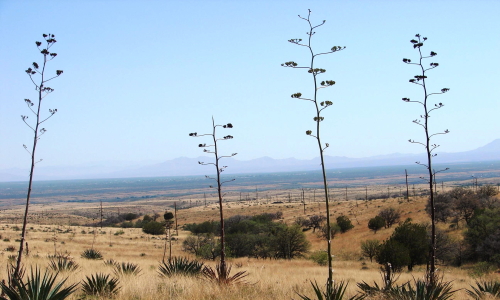
Conservation Workshop Unites Partners
Funding acquired through the Department of Defense’s Readiness and Environmental Protection Integration Program has helped Fort Huachuca conserve 13,857 acres within the Buffalo Soldier Electronic Test Range, precluding incompatible development within the range complex and beneath the installation’s restricted airspace. One noteworthy project occurred in 2018 when Fort Huachuca partnered with Arizona Land and Water Trust and USDA’s Natural Resource Conservation Service to permanently protect the Rose Tree Ranch. Totaling 1,150-acres, the ranch sits within the Babocomari River Watershed and the Sonoita Grassland Conservation Area. In May 2019, the Santa Cruz Natural Resource Conservation District hosted a workshop on the Rose Tree Ranch for the Fort Huachuca Sentinel Landscape partners focused on ecological sites, soils, and plant identification. During the workshop, a soil expert from the University of Arizona guided attendees through the history of erosion and deposition in the area. A Rangeland Management Specialist then explained how elevation, precipitation, percent slope, soil type, and vegetation contribute to an ecological site’s classification. Lastly, a representative from Arizona Revegetation and Monitoring provided tutorials on plant identification. In all, the workshop was an effective means of information sharing and will be replicated by partners in the future.
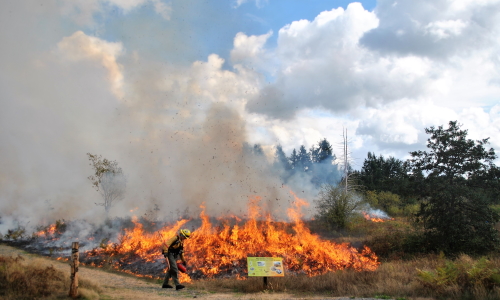
Federal-Tribal Partnership Reduces Risk of Wildfires
The Coronado National Forest blankets portions of the Fort Huachuca Sentinel Landscape. Having once been home to indigenous communities, the Coronado National Forest holds cultural significance for Native American Tribes in the region. As a result, the U.S. Forest Service integrates tribal perspectives into its management of the land. In 2018, the Coronado National Forest and the Bureau of Indian Affairs (BIA) identified an opportunity to build upon their existing relationship by forming a collaborative wildfire mitigation initiative. Funded through the Reserved Treaty Rights Land Program, the project enables the Fort Apache Agency to conduct thinning projects and prescribed burns on Coronado National Forest land. Fire is an important agent of renewal for the forest, and when introduced effectively, reduces the risk of wildfire in the region and improves habitat for over 570 species. In addition to providing restoration benefits, this project also allows the Fort Apache Agency to contribute to the management of the Chi’chil, an acorn from the Emory oak that is an important food source and cultural element for the Apache people. This initiative demonstrates that effective stewardship is not bound by jurisdiction. In 2019, BIA, the Coronado National Forest, and Fort Apache Agency received the prestigious Pulaski Award, which recognizes outstanding performance in areas of interagency collaboration.
Our Partners
Federal Partners
- U.S. Army
- U.S. Department of Agriculture, Farm Service Agency (FSA)
- U.S. Department of Agriculture, Forest Service (USFS)
- U.S. Department of Agriculture, Natural Resource Conservation Service (NRCS)
- U.S. Department of Defense, Readiness and Environmental Protection Integration (REPI)
- U.S. Department of the Interior, Bureau for Land Management (BLM)
- U.S. Department of the Interior, Fish and Wildlife Service (USFWS)
- U.S. Geological Survey
State Partners
- Arizona Department of Agriculture
- Arizona Department of Emergency and Military Affairs
- Arizona Department of Environmental Quality
- Arizona Department of Forestry and Fire Management (DFFM)
- Arizona Department of Water Resources
- Arizona Game and Fish Department
- Arizona State Land Department
- University of Arizona College of Agriculture, Life and Environmental Sciences
- University of Arizona Cooperative Extension
Local Partners
- Cienega Watershed Partnership
- City of Sierra Vista
- Cochise Conservation & Recharge Network
- Cochise County
- Fort Huachuca
- Fry Fire District
- Hereford Natural Resource Conservation District
- Huachuca City
- San Pedro Natural Resources Conservation District
- Santa Cruz County
- Santa Cruz Natural Resource Conservation District
- Sonoran Joint Venture
- Upper San Pedro Partnership
- Whitewater Draw NRCD
- Wilcox-San Simon Natural Resources Conservation District
Private Partners
- Appleton-Whittell Research Ranch
- Arizona Antelope Foundation
- Arizona Association of Conservation Districts
- Arizona Land and Water Trust
- Borderlands Restoration
- Cuenca Los Ojos
- Desert Landscape Conservation Cooperative
- Malpai Borderlands Group
- National Audubon Society
- National Fish and Wildlife Foundation
- Pheasants Forever
- Sky Island Alliance
- The Nature Conservancy
- Trust for Public Land
- Tuscon Audubon Society
In The News
-
Fort Huachuca Fuel Treatments
Fuel treatments on Fort Huachuca produce forest structure and fuel characteristics that reduce the likelihood of future catastrophic fires in endangered species Protected Activity Centers.
Read More -
CCRN continues work to protect Sand Pedro River, local communities
The 2021 Cochise Conservation and Recharge Network (CCRN) annual report demonstrates the benefits of the CCRN efforts to capture storm runoff, control the deposit of sediment during flood events and recharge a 25-mile portion of the Upper San Pedro River.
Read More -
Sustaining the Land: Fort Huachuca Invites in Pollinators on Earth Day
Volunteers of all ages gathered at Lakeside Pond on Monday to help plant the installation’s first pollinator garden, to create a welcoming place for the hummingbirds, butterflies, and other insects that help grow the Earth’s plant and crop populations.
Read More -
Showcasing the Importance of Grasslands, Leopard Frogs and Livestock
In connection with the Sentinel Landscapes initiative, the Cooperative Extension, through the University of Arizona, hosts “Grasslands, Leopard Frogs and Livestock — Fort Huachuca’s 21st Century Allied Forces”.
Read More
Resources
-
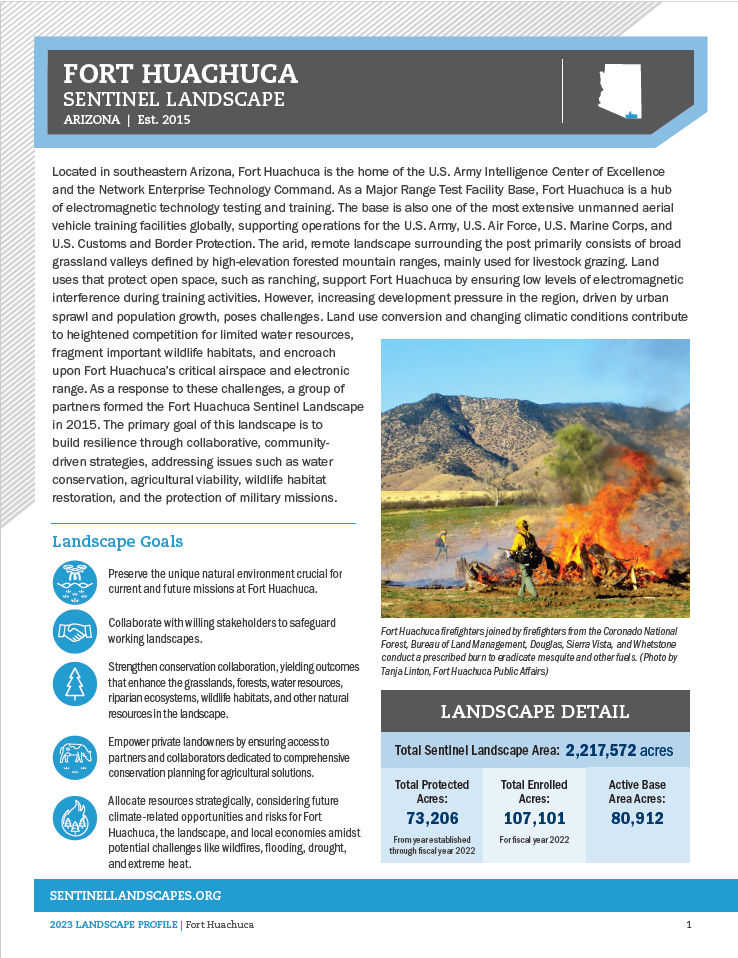
2023 Fort Huachuca Sentinel Landscape Profile
-
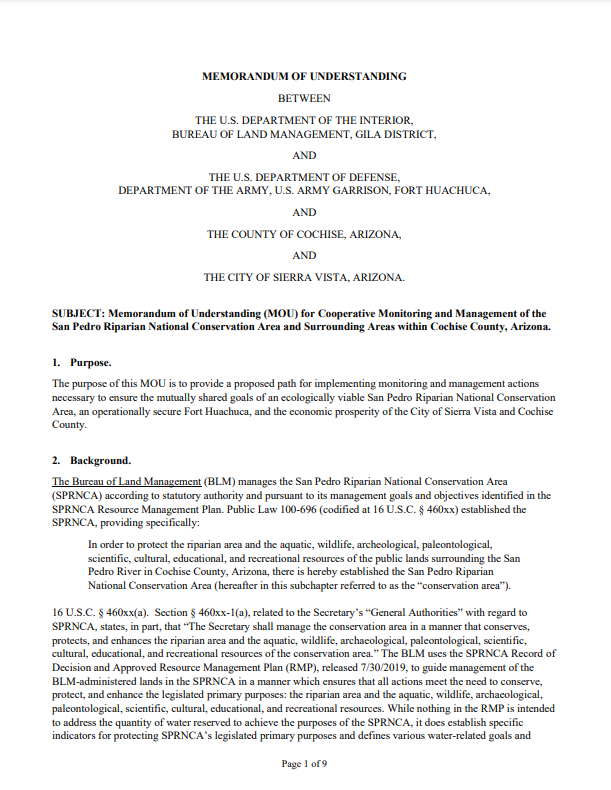
MOU for Cooperative Monitoring and Management in Cochise County, Arizona
-
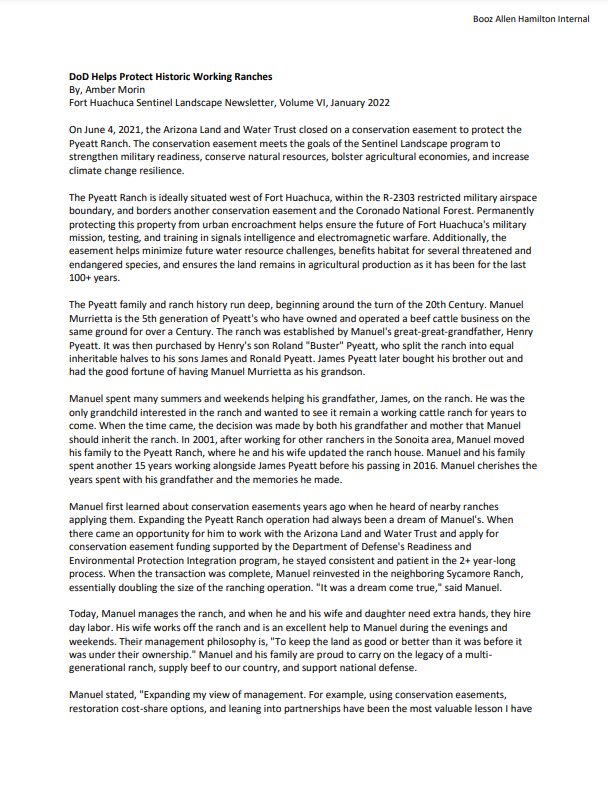
DOD Helps Protect Working Ranches
-
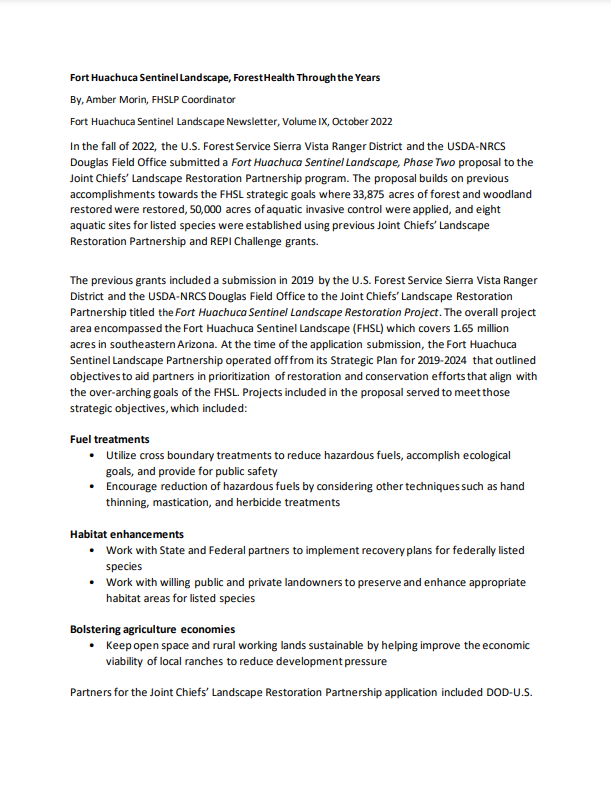
Fort Huachuca Sentinel Landscape, Forest Health Through the Years
-
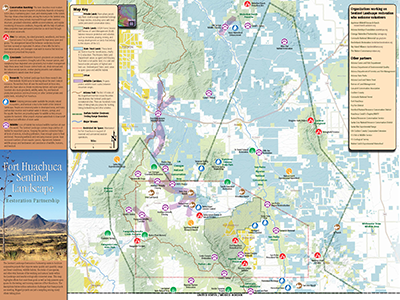
Fort Huachuca Sentinel Landscape Detailed Map
-
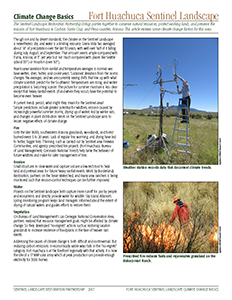
Climate Change—The Basics
-
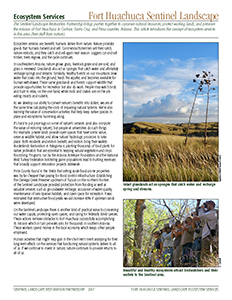
Ecosystem Services Fact Sheet
-
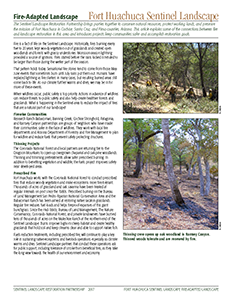
Prescribed Fire Fact Sheet
-
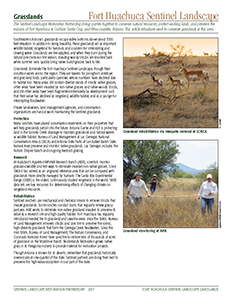
Grasslands Fact Sheet
-
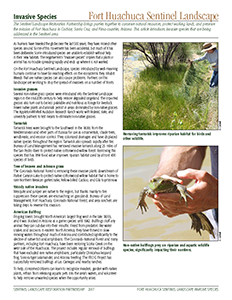
Invasive Species Fact Sheet
-
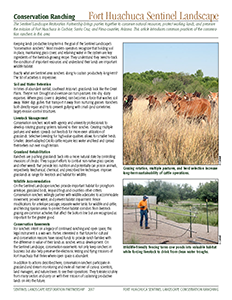
Ranching Fact Sheet
-
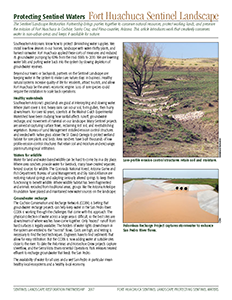
Water Conservation Fact Sheet
-
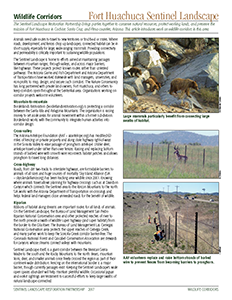
Wildlife Corridors Fact Sheet
-
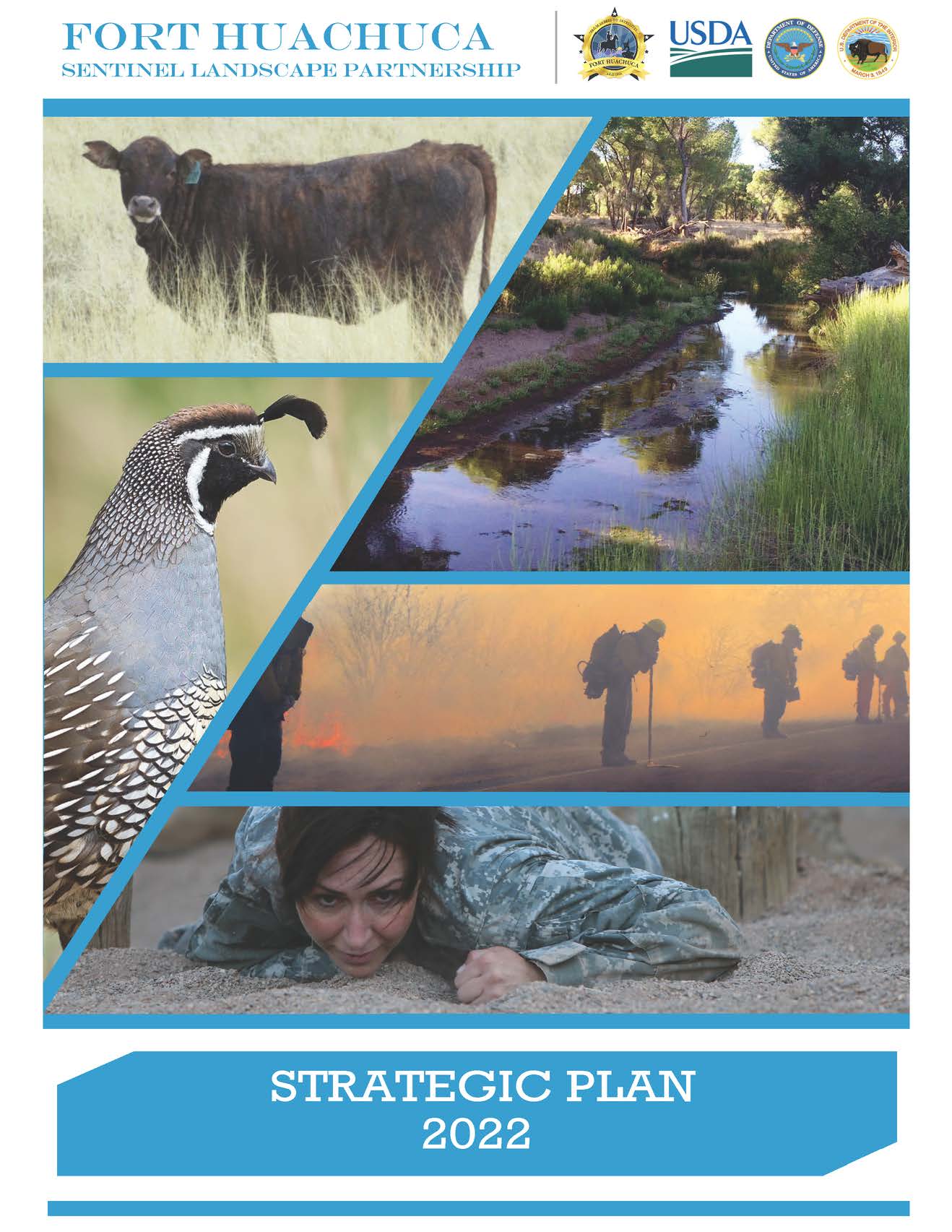
Fort Huachuca Sentinel Landscape Strategic Plan
Meet the Coordinator

Amber Morin
forthuachuca@sentinellandscapes.org
Amber Morin is the Program Coordinator for the Fort Huachuca Sentinel Landscape Partnership. She has held this role since 2020. Before working for the Partnership, Amber worked as the statewide Natural Resource Conservation District Manager and later as the Business Development and County Coordinator for the southern Arizona county Farm Bureaus. She has extensive experience in the agricultural industry, specifically cattle ranching, and pursued further education in Geographic Information Systems Technology from the University of Arizona to better serve the Partnership.